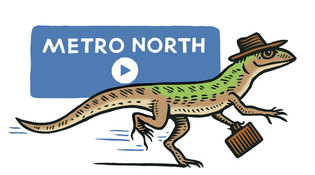 loading
loading
FindingsThe commuting lizardAn Italian reptile finds happiness in Greenwich.  Gregory NemecView full imageColin Donihue ’16PhD was not surprised that the Italian wall lizard was taking its ease atop a wall: sunlit walls are the lizard’s quintessential habitat. What surprised him was finding this particular species in Greenwich, Connecticut. “There aren’t many reptiles that do well this far north,” says Donihue, a Forestry and Environmental Studies graduate. “Especially a lizard from the Mediterranean.” Donihue has since surveyed the backyards of dozens of houses in Greenwich—gaze groundward, listening for the characteristic scamper of a lizard. It’s a burst of dry rustling that he claims is clearly discernible from the rustling of a squirrel or chipmunk. Now a postdoc at Harvard, Donihue is investigating how the lizards made their way to the affluent suburb where, to his surprise, they are thriving. He hypothesizes that they traveled up the Metro-North rail line; the tracks provide warmth, the rocky rail bed ample hiding. (The lizards may even ride the trains, but he doubts it.) To confirm this theory, he has sent specimens out for genetic analysis, to find out whether the Greenwich denizens are related to a population of wall lizards in New York City. (Their relocation is said to involve the international pet trade and a 1960s truck crash.) Donihue is also trying to figure out how the lizards survive in a human-dominated habitat with frigid winters. This line of inquiry feeds into bigger questions: how do species adapt to humans? How do newly introduced species influence ecological processes? How do animals take advantage of new resources, like grassy lawns and speeding train cars? The inquiry began with a picture on Facebook. Since then, he has relied on tips. If you notice a four-inch-long lizard with a moss-green dorsal streak and a predilection for walls and compost, Donihue, [email protected], would very much like to hear from you.
The comment period has expired.
|
|